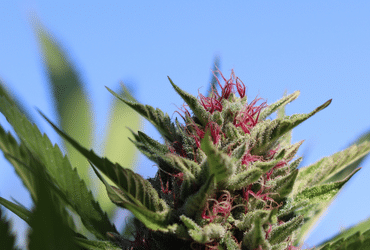A User Guide to Cannabis and the Body
Whether you’re a cannabis veteran or a canna-curious beginner, there’s a whole lot to discover about this one-of-a-kind plant. From terpenes to cannabinoids and beyond, the compounds that give this herb its wide-ranging effects and benefits are worth learning about for anyone with an interest in health, well-being and natural medicine. This is Cannabis 101: your primer on cannabis and how it can benefit you.
What Is Cannabis?
Cannabis is a flowering plant in the Cannabaceae genus, a family that includes hemp, hops and nearly 170 more species. Varieties of cannabis grow around the world, and have been cultivated by mankind for at least 5,000 years. This remarkable herb is harvested and consumed for its psychoactive properties, calming effects and broad, beneficial therapeutic applications supporting health and well-being.
The Endocannabinoid System
Just as plants produce phytocannabinoids, the human body naturally produces cannabinoids known as endocannabinoids. Endocannabinoids and their receptors—found everywhere from the brain to the organs—make up the endocannabinoid system (ECS). This system is fundamental for helping our bodies maintain homeostasis. When we use cannabis, we influence the ECS. Cannabis has naturally occurring phytocannabinoids, like THC and CBD, that send messages to our body’s endocannabinoid system, causing the compounds’ various effects.
As physician Dr. Dustin Sulak puts it, “The endocannabinoid system, with its complex actions in our immune system, nervous system, and all of the body’s organs, is literally a bridge between the body and mind. By understanding this system, we begin to see a mechanism that explains how states of consciousness can promote health or disease.”
How Cannabis Affects the Body
When cannabis interacts with the endocannabinoid system, it helps our bodies regulate pain, inflammation, mental health and much more. Some of the key benefits that cannabis consumption can offer are:
- Pain relief
- Mood stabilization
- Positive effects on cognitive performance and concentration
- Release of physical pressure and muscle contractions
- Alleviation of anxiety and stress
- Reduction of inflammation
Let’s take a deeper look into the compounds that impact how cannabis affects you.
Cannabinoids
Cannabinoids are natural compounds that make up about 15 to 40 percent of the dry weight of the cannabis plant. The two most widely known cannabinoids are THC (tetrahydrocannabinol) and CBD (cannabidiol). Specifically, these are phytocannabinoids, which means they’re cannabinoids that come from plants. The cannabinoid THC is the primary psychoactive compound in cannabis, meaning it’s the one that makes you feel high. CBD is not psychoactive, so while it has similar beneficial effects, it doesn’t cause elevated feelings or intoxication.
Additionally, minor cannabinoids that are found in small quantities within different varieties of cannabis include:
- CBG (cannabigerol) is the most abundant non-psychoactive cannabinoid, often used to ease day-to-day pain. Some research has also suggested that it could have mood stabilizing and uplifting effects due to its role as a CB1 antagonist within the endocannabinoid system.
- CBN (cannabinol) is psychoactive, but less so than THC. It’s known for its restful effects and is commonly used as a sleep aid.
- CBC (cannabichromene) is a non-psychoactive inflammation reliever.
- CBDA (cannabidiolic acid) is essentially CBD in its “raw” form, and features many similar effects.
- THCA (tetrahydrocannabinolic acid) is the non-psychoactive precursor compound to THC. Research has suggested that THCa can offer appetite-inducing, antispasmodic and anti-inflammatory effects.
- THCV is a cannabinoid is a rarer cannabinoid sometimes found in sativa-dominant strains. It acts as an appetite suppressant, and research has suggested that it may also be useful to Type II diabetics for blood sugar regulation.
Terpenes
Terpenes are naturally occurring chemicals found in cannabis and other plants. They’re the source of a plant’s unique flavor and smell, and they can also influence its psychoactive effects. The interaction of terpenes and cannabinoids creates what is known as the entourage effect, a term that describes the phenomenon wherein the effects of the cannabis plant are made stronger by the presence of other, non-psychoactive compounds.
On the female cannabis plant, terpenes are found inside of the trichomes, which are the tiny, sticky glands that cover the bud. Thanks to terpenes, you’ll experience a rich variety of scents and a wide range of sensory experiences when you sniff or smoke your cannabis, from refreshing pinene to earthy myrcene and peppery caryophyllene.
Strains
Strains are specific varieties of cannabis with special characteristics, concentrations of cannabinoids and distinct terpene profiles that influence their aromas and effects. Strains can be roughly sorted into indica, sativa or hybrid categories. Indica cannabis varieties are best known for their relaxing properties that affect the entire body, while sativa varieties are associated with their cerebral effect, which can be mood-elevating and focusing.
Hybrid strains offer both cerebral and whole-body experiences of relaxation, euphoria, focus and more. While we still use the terms “indica” and “sativa” to indicate a particular strain’s dominant effect, most cannabis products are, in fact, hybrids.
How To Use Cannabis
Everyone reacts a little differently to cannabis, depending on their personal body chemistry, health, experience with the plant and other factors. Together with the active cannabinoid and terpene profile of the plant, how you use cannabis—also known as the delivery method—influences how it affects you physically and mentally. In particular, the delivery method can affect onset time (how long it takes to feel a sensation) and the duration of your cannabis experience. It’s important to patiently experiment and find both the delivery method and the products that work for you as an individual.
One thing’s for sure, though: you’ve got options. Here are the five primary ways to consume cannabis:
- Inhalation: vaping or smoking flower, cartridges and more.
- Edible: ingesting gummies, chocolates, capsules, beverages and more.
- Sublingual: placing liquid tinctures, tablets or oils under your tongue.
- Topically: applying balms, salves and creams on affected areas of your body.
- Transdermal: applying patches to a thin area of skin (i.e., your wrist).

Cannabis 101
Just as the number of strains and delivery methods is growing, people today are engaging with cannabis for more and more reasons, from dialing up their artistic inspiration to managing serious health issues.
That variety and diversity is part of what makes the cannabis community special. We understand that there’s a lot to learn about this powerful plant, so don’t be afraid to ask for help before you jump in. Are you interested in trying cannabis yourself? Visit our online store, see us in person or schedule a phone consultation to help you find the cannabis experience that’s perfect for you.
Sources:
Abioye, Amos, et al. “Δ9-Tetrahydrocannabivarin (THCV): A Commentary on Potential Therapeutic Benefit for the Management of Obesity and Diabetes.” Journal of Cannabis Research, vol. 2, no. 1, Jan. 2020, p. 6. BioMed Central, https://doi.org/10.1186/s42238-020-0016-7.
“How Does Marijuana Produce Its Effects?” National Institute on Drug Abuse, https://nida.nih.gov/publications/research-reports/marijuana/how-does-marijuana-produce-its-effects.
Ferber, Sari Goldstein, et al. “The ‘Entourage Effect’: Terpenes Coupled with Cannabinoids for the Treatment of Mood Disorders and Anxiety Disorders.” Current Neuropharmacology, vol. 18, no. 2, Feb. 2020, pp. 87–96. PubMed Central, https://doi.org/10.2174/1570159X17666190903103923.
“Introduction to the Endocannabinoid System.” NORML, https://norml.org/marijuana/library/recent-medical-marijuana-research/introduction-to-the-endocannabinoid-system/. Accessed 4 Feb. 2022.
Jadoon, Khalid A., et al. “Efficacy and Safety of Cannabidiol and Tetrahydrocannabivarin on Glycemic and Lipid Parameters in Patients With Type 2 Diabetes: A Randomized, Double-Blind, Placebo-Controlled, Parallel Group Pilot Study.” Diabetes Care, vol. 39, no. 10, Oct. 2016, pp. 1777–86. PubMed, https://doi.org/10.2337/dc16-0650.
Komorowski, Jan, and Henryk Stepień. “[The role of the endocannabinoid system in the regulation of endocrine function and in the control of energy balance in humans].” Postepy Higieny I Medycyny Doswiadczalnej (Online), vol. 61, 2007, pp. 99–105.
Marijuana Strains: The Best of Indica, Sativa, Hybrid, and More. 9 June 2020, https://www.medicalnewstoday.com/articles/marijuana-strains.
Nachnani, Rahul, et al. “The Pharmacological Case for Cannabigerol.” The Journal of Pharmacology and Experimental Therapeutics, vol. 376, no. 2, Feb. 2021, pp. 204–12. PubMed, https://doi.org/10.1124/jpet.120.000340.
Nagarkatti, Prakash, et al. “Cannabinoids as Novel Anti-Inflammatory Drugs.” Future Medicinal Chemistry, vol. 1, no. 7, Oct. 2009, pp. 1333–49. PubMed Central, https://doi.org/10.4155/fmc.09.93.
Rock, E. M., et al. “Tetrahydrocannabinolic Acid Reduces Nausea-Induced Conditioned Gaping in Rats and Vomiting in Suncus Murinus.” British Journal of Pharmacology, vol. 170, no. 3, 2013, pp. 641–48. Wiley Online Library, https://doi.org/10.1111/bph.12316.
Swift, Wendy, et al. “Analysis of Cannabis Seizures in NSW, Australia: Cannabis Potency and Cannabinoid Profile.” PLOS ONE, vol. 8, no. 7, July 2013, p. e70052. PLoS Journals, https://doi.org/10.1371/journal.pone.0070052.

